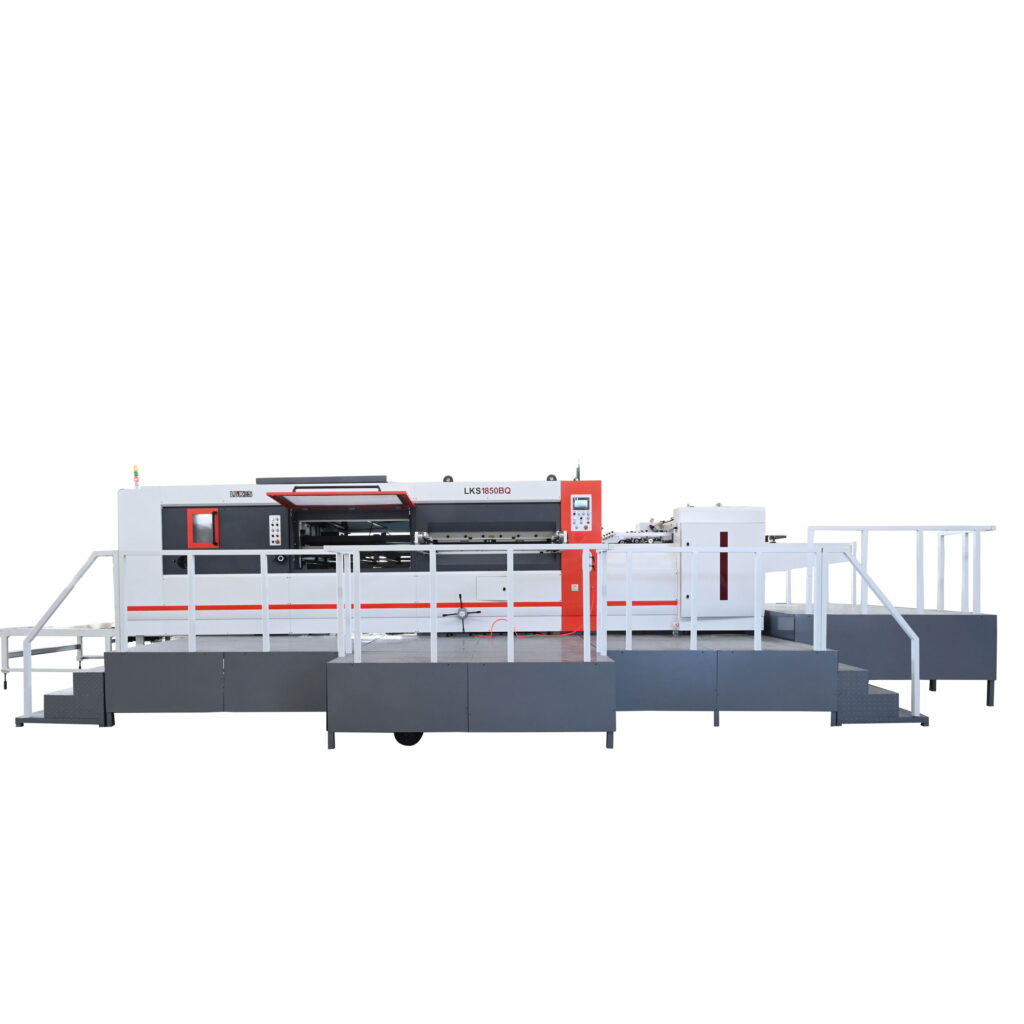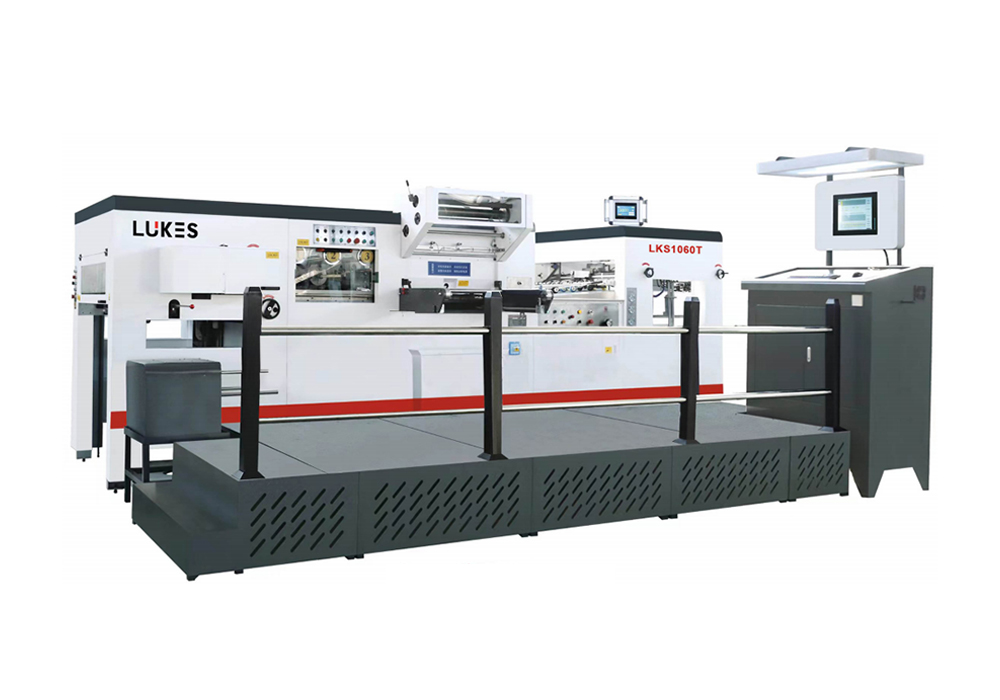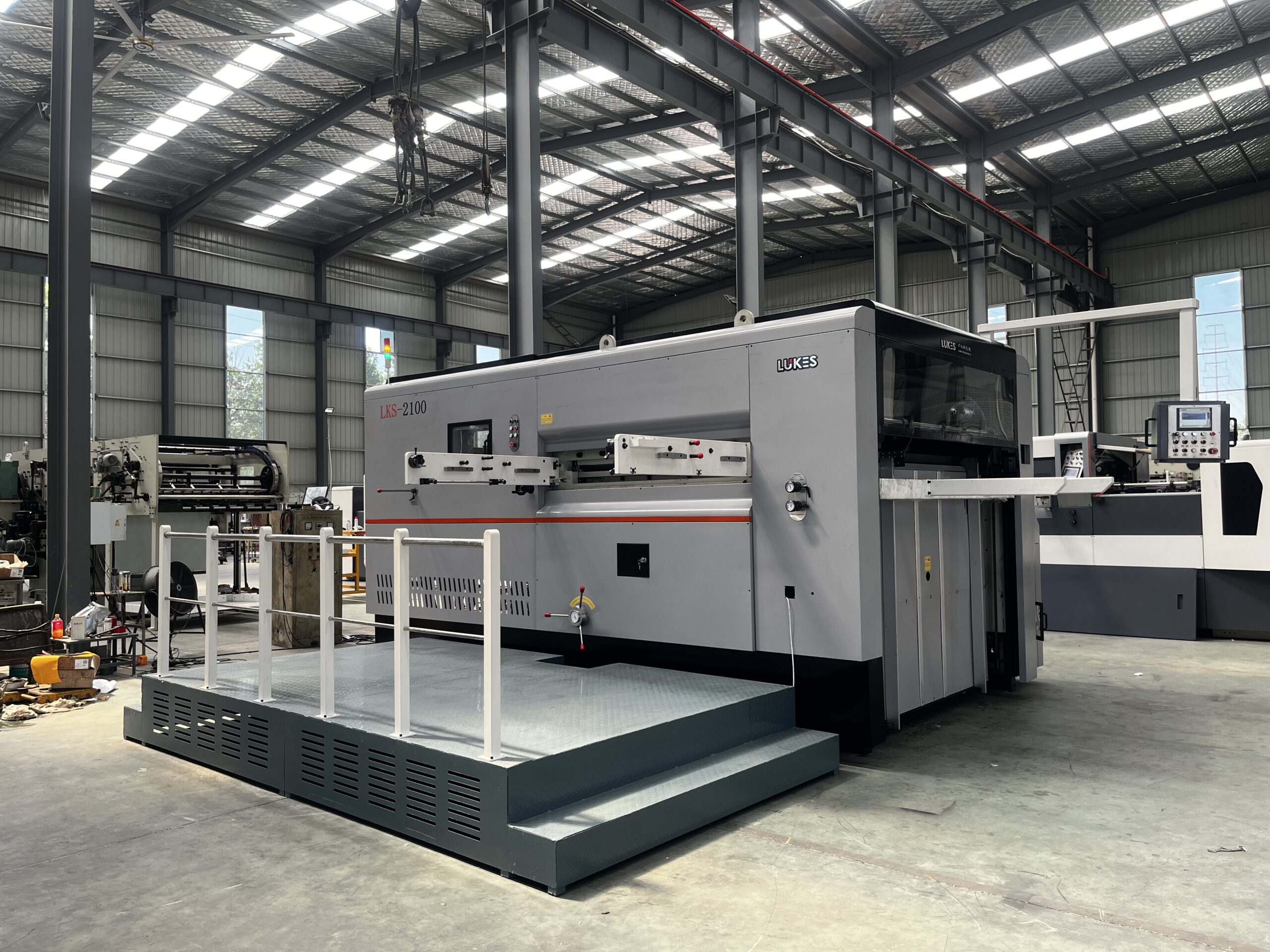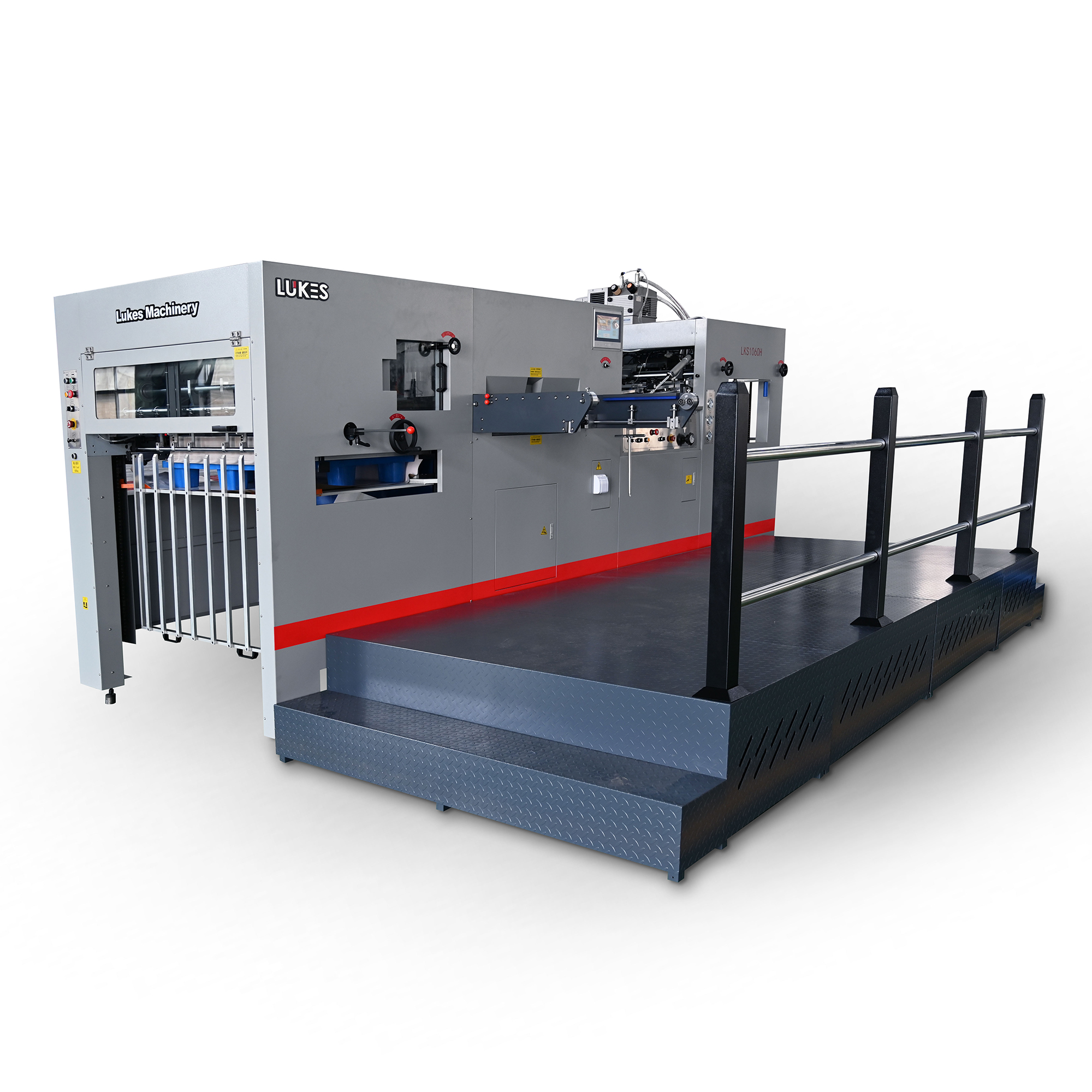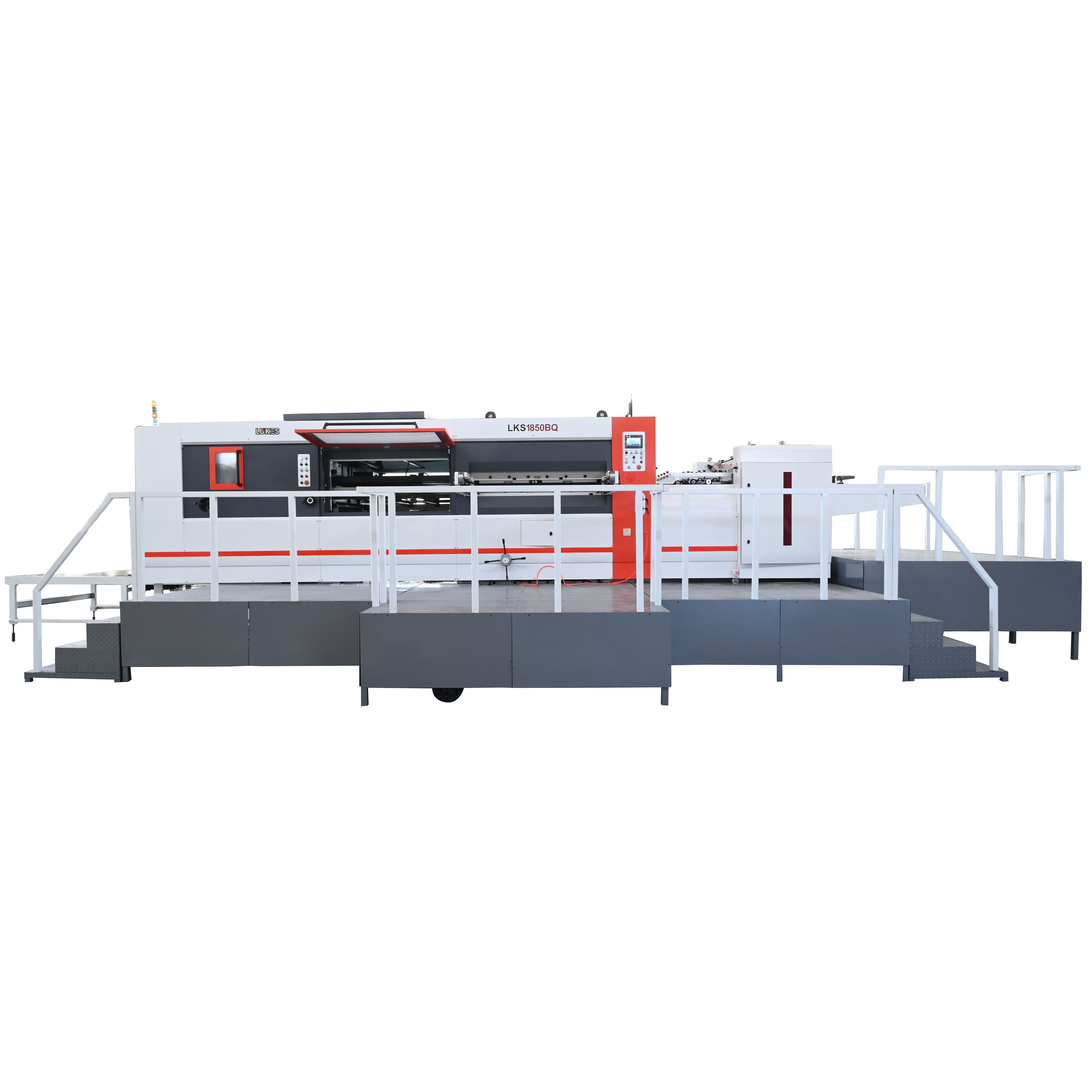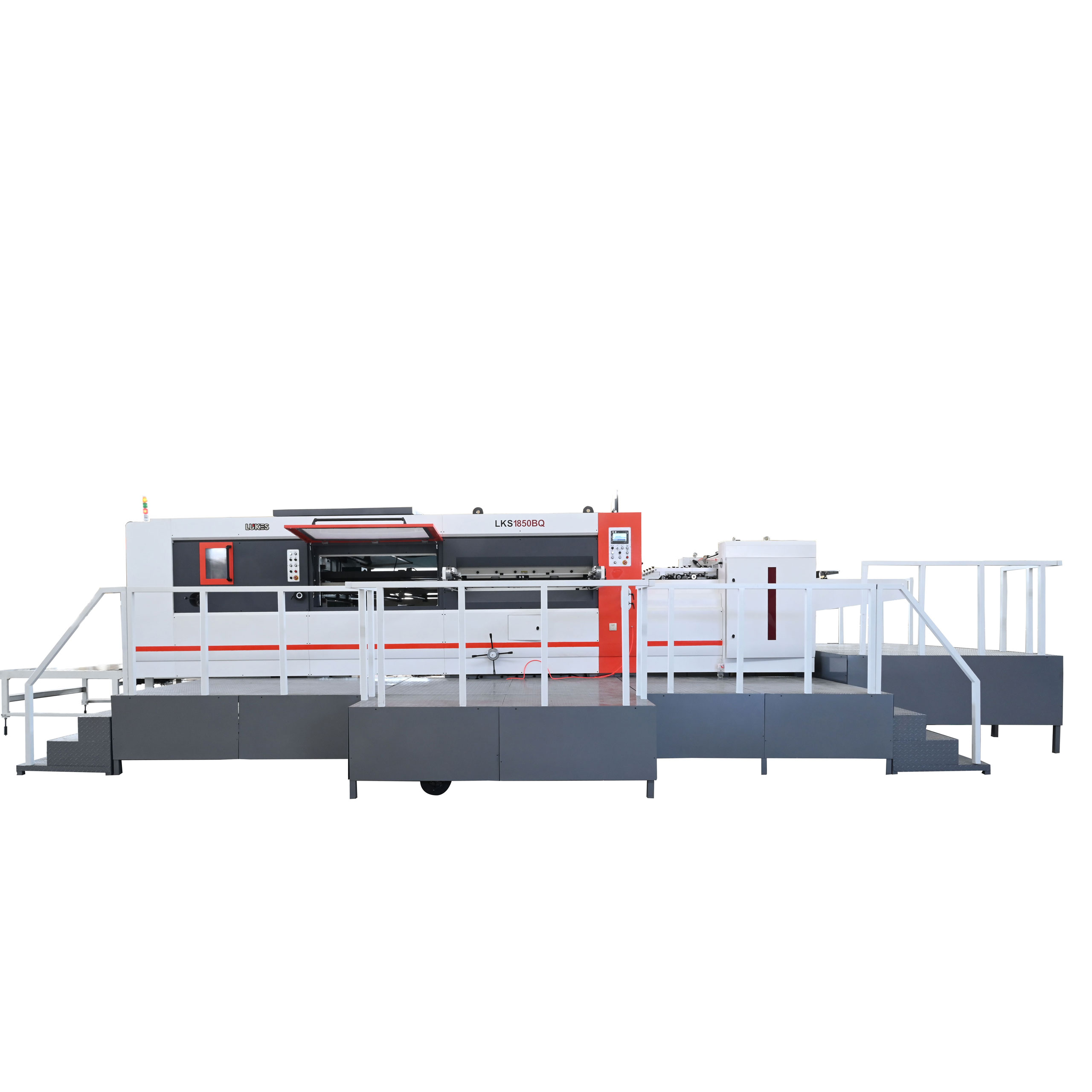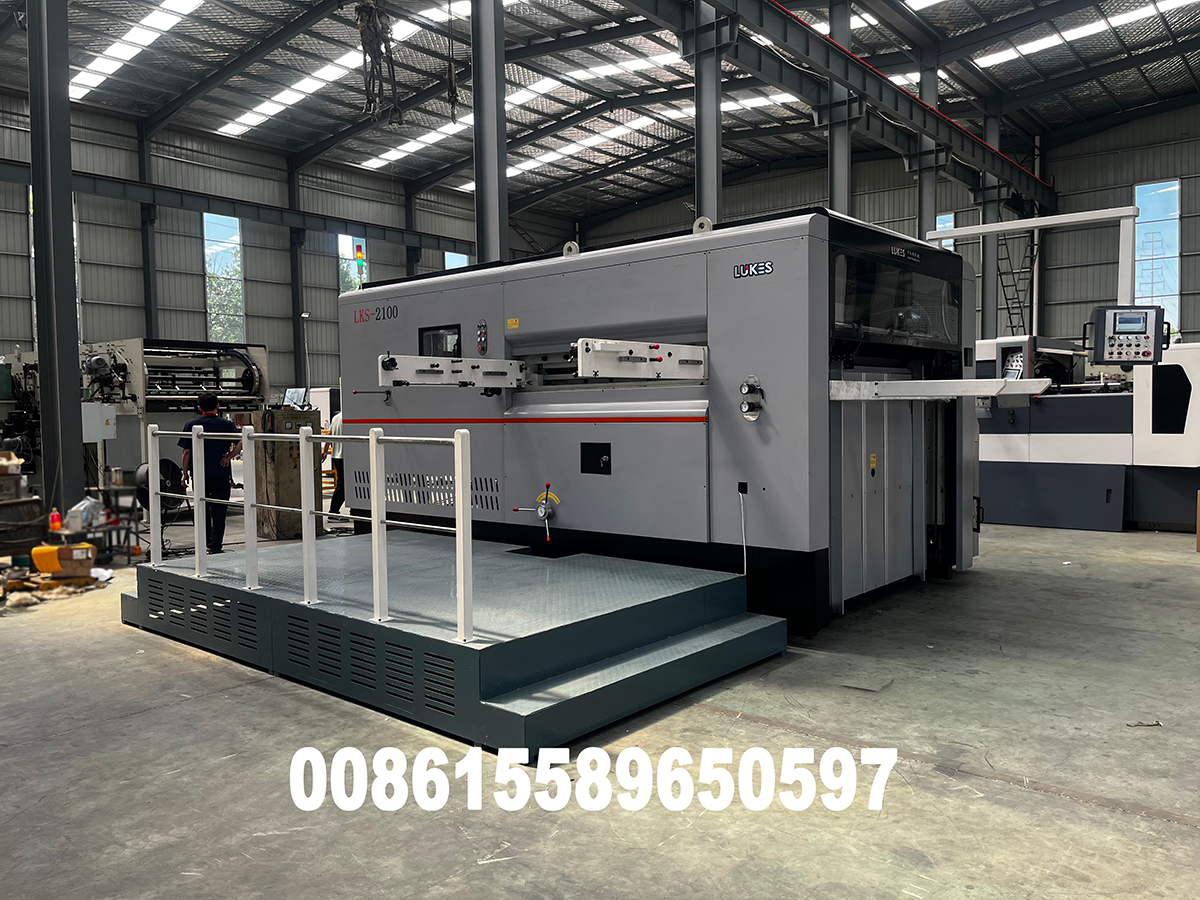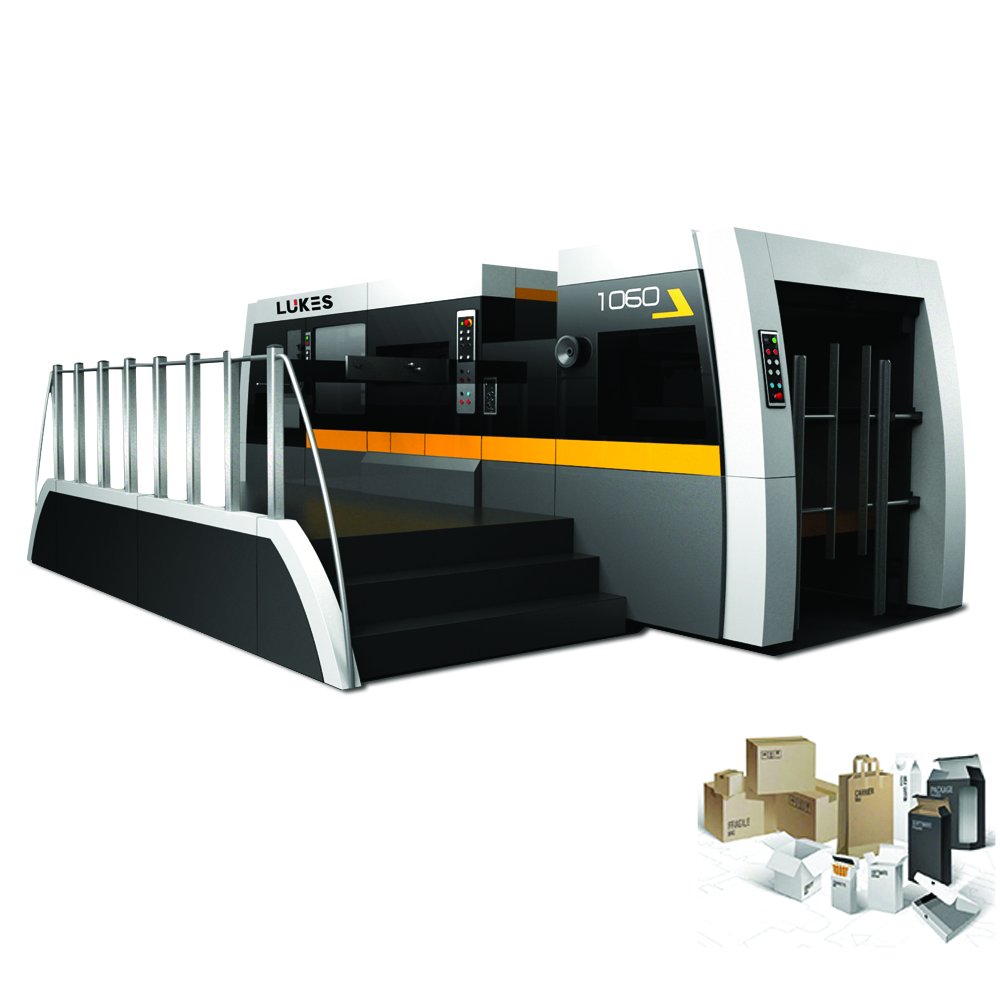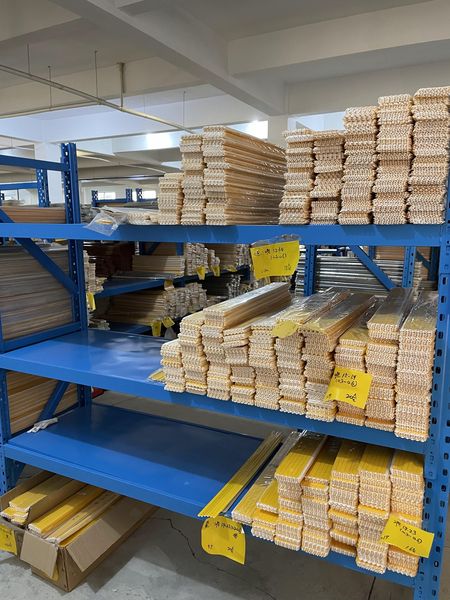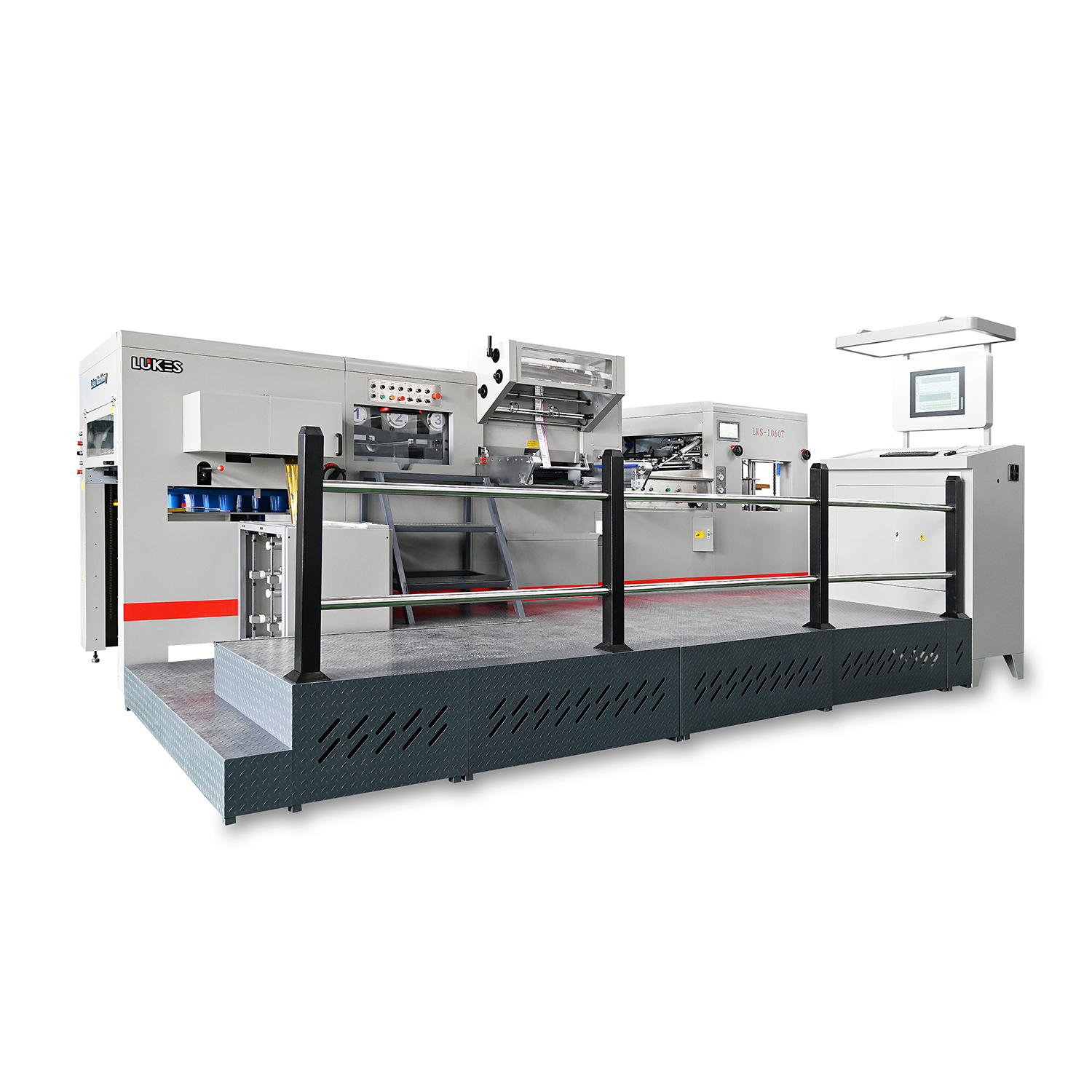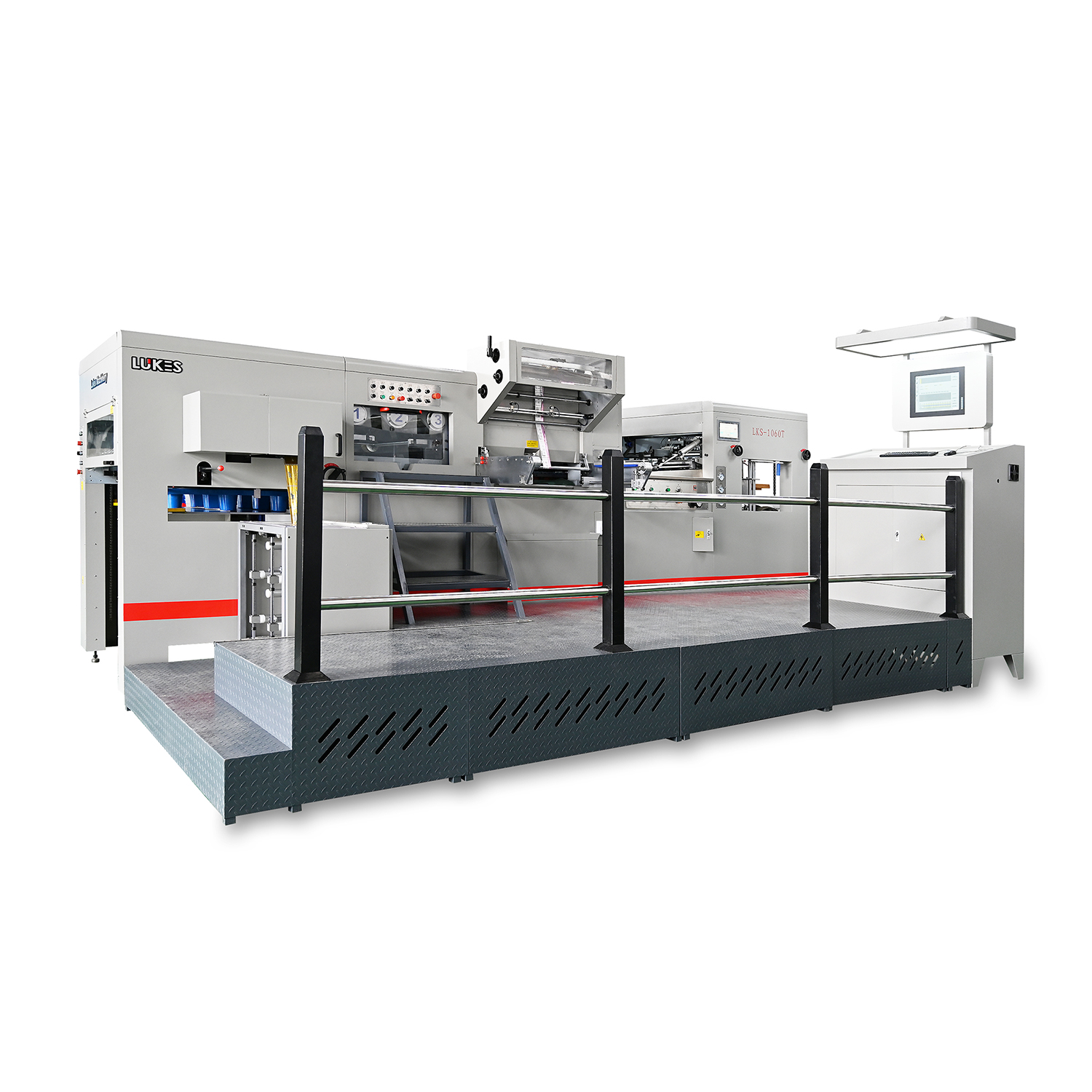A Panorama of Die-Cutting Machine Technology Evolution and Applications: The Revolutionary Path from Traditional Cutting to Intelligent Manufacturing
A Panorama of Die-Cutting Machine Technology Evolution and Applications: The Revolutionary Path from Traditional Cutting to Intelligent Manufacturing
1 The Origin and Technological Evolution of Die-Cutting Machine: From Mechanical Innovation to Intelligent Creation
Die-cutting technology, as a core process in modern printing and packaging, has witnessed the evolution of industrial manufacturing from mechanization to intelligence. The technological foundation of global die-cutting equipment can be traced back to 1940, when Henri Bobst of Switzerland successfully developed the AP900, the world’s first fully automatic flatbed die-cutter. With a die-cutting speed of 3,600 cuts per hour, this machine pioneered automation in post-print processing. Its innovation lies in integrating four modules—paper feeding, die-cutting, waste removal, and paper collection—into a continuous production line, fundamentally overcoming the inefficiency of traditional manual die-cutting. In the decades that followed, companies such as Wupa of Germany and Asahi of Japan joined the ranks of technological innovation, driving the continuous evolution of die-cutting technology towards higher speed and greater precision.
Indigenous innovation in China’s die-cutting machinery began in the early days of reform and opening up. In 1978, the Yutian Agricultural Machinery Factory (later renamed Yutian Printing Machinery Factory), drawing on technology from the Beijing People’s Machinery Factory, successfully trial-produced the DDM101 end blade grinder, marking the beginning of my country’s independent manufacturing of post-press equipment. In 1980, the factory launched the groundbreaking QY-401 automatic tangent and creasing machine, achieving 80 tons of die-cutting pressure and 67 strokes per minute, a threefold increase in production capacity compared to traditional equipment and filling a gap in the domestic market for automatic flatbed die-cutting machine. Debuting at the 1988 Canton Fair, this machine was exported to over ten countries, including the United States, Japan, and Germany, establishing the “Yuyin in the north, Yahua in the south” industrial landscape. Although Chinese die-cutting machines at this stage lagged behind high-end foreign equipment (12,000 strokes per hour, 0.1mm) in speed (6,000-7,000 strokes per hour) and precision (0.15-0.2mm), they successfully broke the technological monopoly.
The introduction and improvement of rotary die-cutting technology was a crucial step for my country to catch up with global standards. In 1978, my country imported its first batch of chain-type die-cutters from Japan, but due to the high cost of platemaking, their widespread adoption was slow. This type of equipment utilizes “soft cutting technology”—a polyurethane rubber sleeve covers the steel roller surface to protect the die. The dual-roller pressure allows for high-speed die-cutting at 140 sheets per minute with an accuracy of ±1mm. Technical difficulties arise from the reliance on imported rubber sleeves (from the United States and Taiwan), and the need for a “soft roller repair mechanism” and “speed differential compensation device” to address dimensional deviations caused by wear. 39 With breakthroughs in localized technologies such as cutting-edge paper feeding systems (accuracy of ±0.5mm), rotary die-cutting has gradually replaced inefficient rotary flattening equipment and become the mainstream choice for corrugated box processing.
The wave of digitalization has spurred innovation in plateless die-cutting technology. In 2013, Changzhou Temine Company launched the A-Starcut digital die-cutting machine, the first to achieve “plateless, on-demand cutting.” Using a CorelDRAW plug-in to generate cutline files, combined with an automatic alignment system, it addresses the timeliness and cost challenges of small-batch orders. At the same time, laser die-cutting technology has emerged. Companies like Han’s Guanhua are using high-precision laser beams to replace physical die cutters. This technology can handle cutting arbitrary curves, reducing die-cutting proofing costs by 90% and making it particularly suitable for producing personalized anti-counterfeiting labels. By 2025, satellite modular circular die-cutters will further integrate AI control technology. Through features such as asynchronous lamination and automatic mark point compensation, they will achieve precision improvements of ±0.05mm, meeting the manufacturing needs of precision electronic components such as semiconductors and flexible screens.
2 Core Advantages and Technological Breakthroughs: How Die-Cutting Machine Reshape Industrial Efficiency
The widespread use of die-cutting machine in the manufacturing industry stems from their unique technological advantages. These advantages not only address the bottlenecks of traditional cutting processes but also create significant value in terms of precision, efficiency, and cost. By comparing the performance differences between traditional and modern die-cutting technologies, we can clearly see how this technological innovation is reshaping industrial efficiency.
2.1 A Dual Revolution in Precision and Efficiency
Achieving micron-level precision: Traditional “tiger-mouth” flatbed die-cutting relies on manual feeding, maintaining an accuracy of only ±1mm and placing high operator risk (frequent arm-breaking accidents). Fully automatic die-cutting equipment, however, has achieved a qualitative leap through photoelectric positioning systems and servo control technology. For example, the satellite modular circular die-cutting machine utilizes multi-axis linkage compensation to maintain a cutting tolerance within ±0.05mm, meeting high-precision requirements such as semiconductor wafer packaging. The cutting-edge paper feeding system of the rotary die-cutter has further improved carton die-cutting accuracy to ±0.5mm, significantly reducing scrap rates.
Exponential leaps in production speed: In the era of semi-automatic die-cutting (such as the Yuyin QY-401 model from the 1980s), die-cutting speeds were a mere 67 cuts/minute. Modern fully automatic flatbed die-cutters (such as the high-speed DP600) now reach 200 cuts/minute, with cutting-edge equipment like the latest Bobst model exceeding 12,000 sheets/hour. Rotary die-cutting technology has also seen significant advancements: from an initial 140 sheets per minute to the current 200 sheets per minute. Combined with a suction-type paper feed system, this enables efficient production of corrugated boxes on an assembly line.
2.2 Structural Optimization of Overall Costs
Disruptive Reduction in Platemaking Costs: Traditional die-cutting costs are high, costing small and medium-sized printing companies an average of 30,000 to 150,000 yuan annually, and requiring dedicated storage space and specialized technicians for maintenance.10 Laser die-cutting technology completely eliminates the need for physical die-cutting tools, directly controlling the laser path through a computer, reducing the cost of re-cutting a single piece to near zero. Using a 20,000-hour laser tube as its core component, the equipment can operate continuously for 6-8 years, with replacement costs as low as 20,000 yuan per unit.
Systematic Control of Material Loss: The asynchronous lamination technology of rotary die-cutters allows different workstations to skip gaps as needed, reducing printed material waste. The DP600 high-speed die-cutter, designed for large-format displays, improves material utilization by optimizing die-line layout, saving 15%-20% of substrate compared to traditional stamping methods. In addition, the soft roller’s lateral movement device (40mm displacement) prevents repeated local cutting in rotary die-cutting equipment, extending the life of the rubber sleeve by 3-4 times and reducing the frequency of replacing high-value consumables (the unit price of American rubber sleeves is twice that of Taiwanese products).
2.3 Scenario Adaptation of Intelligent Functions
Adaptive Production Management Systems: Modern die-cutting equipment deeply integrates IoT technology. For example, satellite-module rotary knife machines are equipped with 100 process storage modules, allowing one-click recall of historical parameters. A count-down stop function automatically cuts off the power supply after reaching the set output, avoiding overproduction losses.
The rotary die-cutting machine’s speed differential compensation device adjusts the line speed via a clutch, addressing dimensional deviations caused by the reduced diameter of the soft roller after repair, thereby preventing bulk returns.
Expanding Flexible Processing Capabilities: Laser die-cutting machines transcend the limitations of physical die cutting to achieve arbitrary curve cutting and depth gradient control (freely switching between semi-transparent and fully transparent), making them particularly suitable for complex processes such as embossed hot stamping and variable varnish on red wine labels. Wanjie’s intermittent rotary printing press integrates ten processes into a single machine, meeting the multi-process overlay requirements of European high-end wine labels.
3 Application Scenarios and Industry Solutions: Industrial Penetration of Die-Cutting Technology
Due to its advantages in precision and efficiency, die-cutting technology has been deeply integrated into the core production processes of modern manufacturing, providing customized solutions for diverse industries. From traditional packaging to high-tech electronics, die-cutters continue to expand their application, becoming indispensable processing equipment in multiple industrial chains.
3.1 Packaging and Printing: From Basic Cartons to High-End Brand Packaging
Automated Corrugated Box Production: Rotary die-cutters, with a high-speed processing capacity of 140-200 sheets per minute, have become standard equipment for large and medium-sized carton factories. Their suction-type paper feed system precisely handles watermarked cardboard, while their chain-type paper feed solution solves the warping problem of offset-coated cardboard, making them suitable for the mass packaging needs of industries such as food and home appliances. Yutian’s fully automatic die-cutting machine integrates paper laminating, window pasting, and carton gluing equipment to achieve integrated molding for daily necessities packaging, such as milk cartons, significantly improving the cartons’ compressive strength and sealing properties.
Luxury Goods and Anti-Counterfeiting Labels: Wanjie rotary printing presses integrate 18 processes, including flexographic printing, cold foiling, and screen printing, and hold a 70% share of the European wine label market. These labels feature 3D embossing and optically variable anti-counterfeiting effects. A single machine can replace ten traditional machines, meeting small-batch custom orders.
Laser die-cutting machine further enable precise antenna etching for RFID tags, achieving an implanted chip position error of ≤0.1mm, providing anti-counterfeiting and traceability support for high-end products.
3.2 Consumer Electronics Industry: Micron-Level Processing of Precision Components
Display Panel Core Materials: The DP600 high-speed die-cutting machine is designed specifically for large-format displays. Its large 620×550mm die plate is compatible with brittle materials such as OLED polarizers, diffuser films, and optical composite films. An automatic pressure regulation system (accuracy 0.01 MPa) and servo feed control prevent material stretching and deformation, increasing the yield rate to 99.2%. Satellite modular circular knife cutting machines utilize a dual-spindle synchronous production mode to achieve multi-shape die-cutting on lithium battery separators and mobile phone touch screen films, maintaining an accuracy of ±0.05mm, making them suitable for the JIT production systems of companies such as Huawei and Samsung.
Efficient forming of electronic auxiliary materials: Micro components such as automotive sensor seals and mobile phone dust screens rely on high-precision die-cutting technology. The circular knife die-cutting machine’s station compensation function can handle continuous punching of copper and aluminum foil (0.1mm thickness) to avoid wrinkling. The contactless nature of laser die-cutting ensures that FPC flexible circuit boards are free of mechanical stress damage during cutting.
3.3 Daily Chemicals, Medical Devices, and Emerging Industries: Innovative Responses to Short-Run Demand
Personalized Consumption and Medical Devices: The daily chemical industry has a strong demand for small-batch, colorful packaging, such as limited-edition cosmetics gift boxes. The A-Starcut digital die-cutting machine, combined with a 93.8 square meter/hour roll-to-roll printer, enables on-demand production with a minimum order of 100 sheets, shortening delivery cycles to 24 hours. Laser die-cutting technology is used in the medical field to process dialysis membranes and sustained-release drug patches. Its aseptic cutting properties eliminate the risk of microbial contamination associated with traditional die-cutting.
Green Packaging and the Cultural and Creative Industry: Die-cutting indentations for biodegradable lunch boxes require precise control of fold depth (too deep will break, too shallow will make the die difficult to form). A flatbed die-cutting machine uses a real-time pressure monitoring system (adjustable to 80 tons) to ensure perfect forming of environmentally friendly materials. 1The cultural and creative industry utilizes laser die-cutting to create paper artworks and leather hollow bookmarks, while computer control enables mass reproduction of complex designs such as the Forbidden City pattern.
4 Conclusion: The Convergence and Future of Die-Cutting Technology
The journey of die-cutting machines from the mechanical era to the intelligent era demonstrates the power of technological convergence to reshape the manufacturing industry. From the mechanical innovations of Bobst in Switzerland in 1940, the independent breakthroughs of Chinese jade seals in 1980, to today’s digital leaps in laser and circular knife technology, die-cutting equipment has consistently evolved around three core pillars: precision advancement, efficiency revolution, and cost reconstruction. In the future, with the penetration of satellite modular circular knife machines in the semiconductor packaging field and the widespread adoption of laser plateless die-cutting for personalized packaging, die-cutting technology will be more deeply integrated into the intelligent manufacturing ecosystem. Notably, Chinese companies, led by leading companies such as Wanjie and Daju Guanhua, are shifting from technology followers to standard setters, participating in the global high-end supply chain competition. This transformation not only promotes the upgrade from “Made in China” to “Smart Manufacturing in China,” but also provides global users with cost-effective and highly adaptable die-cutting solutions.
Driven by the concepts of green manufacturing and sustainable development, the environmental performance of die-cutting technology will become a new focus: improving laser energy utilization, optimizing die-cutting parameters for biodegradable materials, and controlling the carbon footprint of equipment throughout its lifecycle will lead the research and development of the next generation of die-cutting equipment. Modular design (such as the 120 combined models of Yutian printing machines) and cross-industry applications (such as anti-counterfeiting art paper sculptures) further demonstrate this technology’s powerful cross-border adaptability.78 The evolution of die-cutting machines is essentially an epic story of innovation that integrates industrialization and digitalization. They continue to inject precision, efficiency, and flexibility into the global manufacturing industry and occupy a central position in the blueprint for future smart factories.
